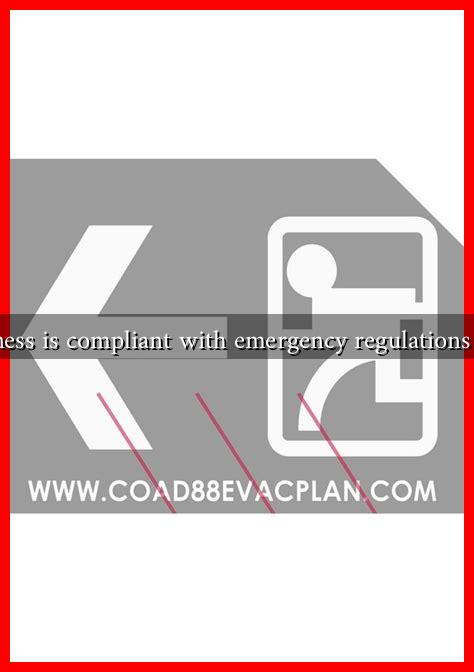-
Table of Contents
- How to Ensure Your Business is Compliant with Emergency Regulations in Northeast Ohio Today
- Understanding Emergency Regulations
- Steps to Ensure Compliance
- 1. Stay Informed
- 2. Develop an Emergency Plan
- 3. Train Your Employees
- 4. Document Everything
- Case Studies: Successful Compliance in Action
- Conclusion
How to Ensure Your Business is Compliant with Emergency Regulations in Northeast Ohio Today
In the wake of recent global events, businesses in Northeast Ohio must navigate a complex landscape of emergency regulations.
. Compliance is not just a legal obligation; it is essential for the safety of employees, customers, and the community. This article outlines practical steps to ensure your business adheres to these regulations, providing valuable insights and resources for business owners.
Understanding Emergency Regulations
Emergency regulations can vary significantly based on the nature of the emergency—be it a public health crisis, natural disaster, or other unforeseen events. In Northeast Ohio, businesses must stay informed about local, state, and federal guidelines. Key regulations may include:
- Health and safety protocols (e.g., mask mandates, social distancing)
- Emergency preparedness plans
- Employee rights and protections during emergencies
- Business continuity plans
For instance, during the COVID-19 pandemic, the Ohio Department of Health issued various orders that required businesses to implement safety measures to protect public health. Understanding these regulations is the first step toward compliance.
Steps to Ensure Compliance
To ensure your business is compliant with emergency regulations, consider the following steps:
1. Stay Informed
Regularly check for updates from reliable sources such as:
- The Ohio Department of Health: odh.ohio.gov
- The Centers for Disease Control and Prevention (CDC): cdc.gov
- Your local health department
Subscribing to newsletters or alerts from these organizations can help you stay updated on any changes in regulations.
2. Develop an Emergency Plan
Creating a comprehensive emergency plan is crucial. This plan should include:
- Risk assessment: Identify potential emergencies that could impact your business.
- Response strategies: Outline how your business will respond to different types of emergencies.
- Communication plan: Establish how you will communicate with employees and customers during an emergency.
For example, a local restaurant in Cleveland developed a detailed emergency plan during the pandemic, which included protocols for sanitizing surfaces, managing customer flow, and communicating safety measures to patrons. This proactive approach not only ensured compliance but also built customer trust.
3. Train Your Employees
Employee training is vital for compliance. Ensure that all staff members are aware of:
- The emergency regulations that apply to your business
- Safety protocols and procedures
- How to report safety concerns or violations
Regular training sessions can help reinforce these points. For instance, a manufacturing company in Akron conducted monthly safety drills to ensure employees were prepared for emergencies, which significantly reduced workplace incidents.
4. Document Everything
Maintaining thorough documentation is essential for compliance. Keep records of:
- Employee training sessions
- Safety inspections and maintenance
- Incident reports
Documentation not only helps in demonstrating compliance but also serves as a valuable resource for improving your emergency response strategies.
Case Studies: Successful Compliance in Action
Several businesses in Northeast Ohio have successfully navigated emergency regulations. For example, a local gym implemented strict health protocols, including temperature checks and limited capacity, which allowed them to remain open during the pandemic while ensuring the safety of their members. Their commitment to compliance not only kept them operational but also attracted new clients who valued their safety measures.
Conclusion
Ensuring compliance with emergency regulations in Northeast Ohio is a multifaceted process that requires vigilance, planning, and training. By staying informed, developing a robust emergency plan, training employees, and maintaining thorough documentation, businesses can navigate the complexities of compliance effectively. As demonstrated by local case studies, a proactive approach not only safeguards your business but also fosters trust and loyalty among customers. In today’s unpredictable environment, compliance is not just a legal requirement; it is a cornerstone of sustainable business practice.





